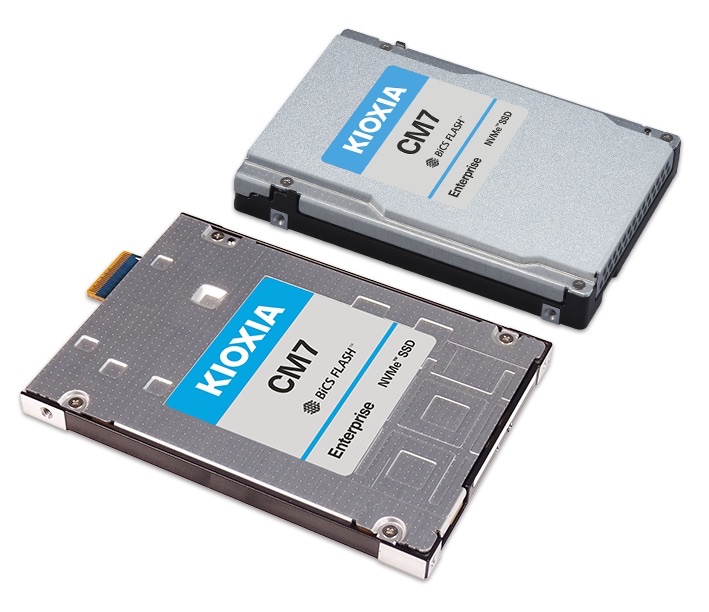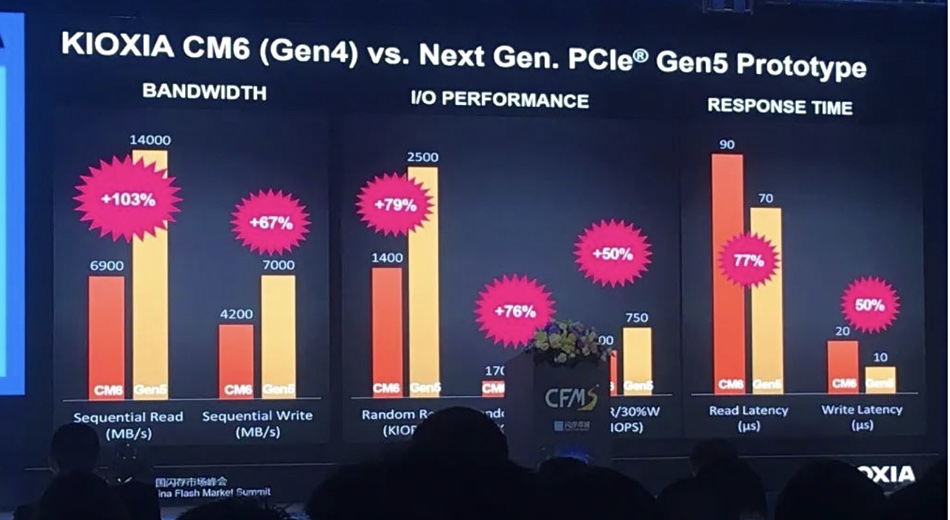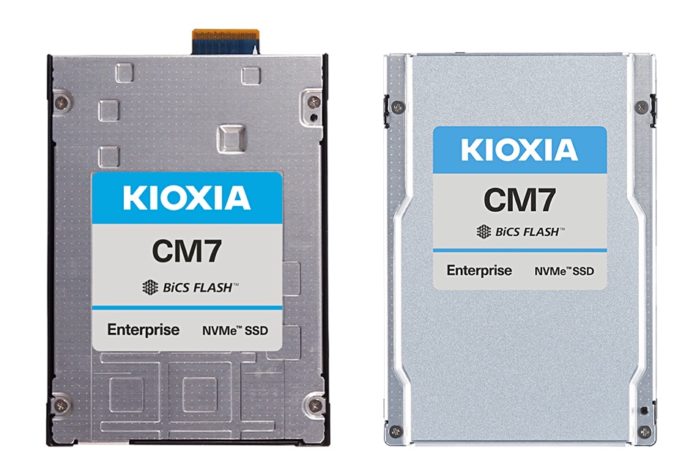Kioxia is shipping a CM7 enterprise SSD – using the PCIe 5 bus – to select customers, and it’s twice as fast as the previous CM6 drive that uses the slower PCIe 4 bus.
The PCIe 5 bus runs at a 4GB/sec/lane bandwidth, twice PCIe 4’s 2GB/sec/lane and quadruple PCIe 3’s 1GB/sec/lane speed. Intel’s coming Sapphire Rapids Xeon server processor will support PCIe 5 and its Alder Lake Core CPUs, used in desktops and notebooks, already support it. Kioxia’s data center SSDs are typically for hyperscalers with enterprise customers getting its enterprise-class SSDs. Kioxia has already announced a CD8 drive supporting PCIe 5 for hyperscaler customers. The existing Kioxia CM6 enterprise SSD comes in read-intensive and mixed-use variants and the CM7 continues this pattern.
Neville Ichhaporia, VP of SSD marketing and product management at KIOXIA America, said: “CM7 not only doubles performance from the prior generation but also offers an expanded set of form factor options, larger capacities, and premium features for our enterprise server and storage customers.”

The CM7 comes in 2.5-inch (U.2 and U.3) and EDSFF E3.S form factors. It is built from 112-layer BiCS gen 5 3D NAND in TLC (3bits/cell) format – the CM6 used earlier 96-layer flash. Capacity wise the CM7’s mixed use drive has 1.6TB, 3.2TB, 6.4TB and 12.8TB variants. The read-intensive version has less over-provisioning and its capacity levels are 1.92, 3.84, 7.68, 15.36 and 30.72TB. But the E3.S read-intensive product only reaches a 15.36TB maximum.
Thus the entry-level CM6 capacities have been dropped: 960GB for mixed use and 800GB for read-intensive use.
Kioxia has given the CM7 dual-ports, power loss protection, CG-Opal SED support complying with FIPS-140-3, SRIOV, CMB, SGL, and multistream writes. Like the CM6 the read-intensive version supports 1 drive write per day (DWPD) while the mixed-use alternative has a 3 DWPD endurance rating.
Kioxia has only released a single CM7 performance statistic: sequential read bandwidth of up to 14GB/sec, nearly saturating the PCIe 5 bus, and slightly more double the CM6’s 6.9GB/sec read speed.
However, Chinese outlet Weixin showed a slide from Kioxia’s presentation at the China Flash Market Summit in September last year that compares the CM6 to a next-generation PCIe 5 prototype and this gives us solid clues about the missing CM7 performance numbers;

Using what we know about the CM6’s performance we can build a provisional CM7 performance table using the Weixin slide’s numbers;

The CM7’s sequential speeds appear faster than those of the single-ported CD8 (7.2GB/sec read and 6GB/sec write) and so are its random read and write IOPS.
The CD8 offers up to 1.25 million random read IOPS and 200,000 random write IOPS, well down on the CM7. The Weixin slide also shows the CM6’s R/W latency of 90/10 µs changing to the CM7’s 70/10 µs. PCIe 5 SSDs are going to be a revolution to those of us using existing PCIe 3 SSDs.
IDC supports the idea that PCIe 5 and the EDSFF form factors will become more important in the near future. Research VP Jeff Janukowicz said in Koixia’s press material: “PCIe 5.0 will deliver new levels of performance and will usher in a wave of EDSFF form factor SSDs, helping to replace the 2.5-inch form factor for servers and storage. We expect the EDSFF form factor to grow to over 50 percent of enterprise SSD unit shipments by 2026.”








